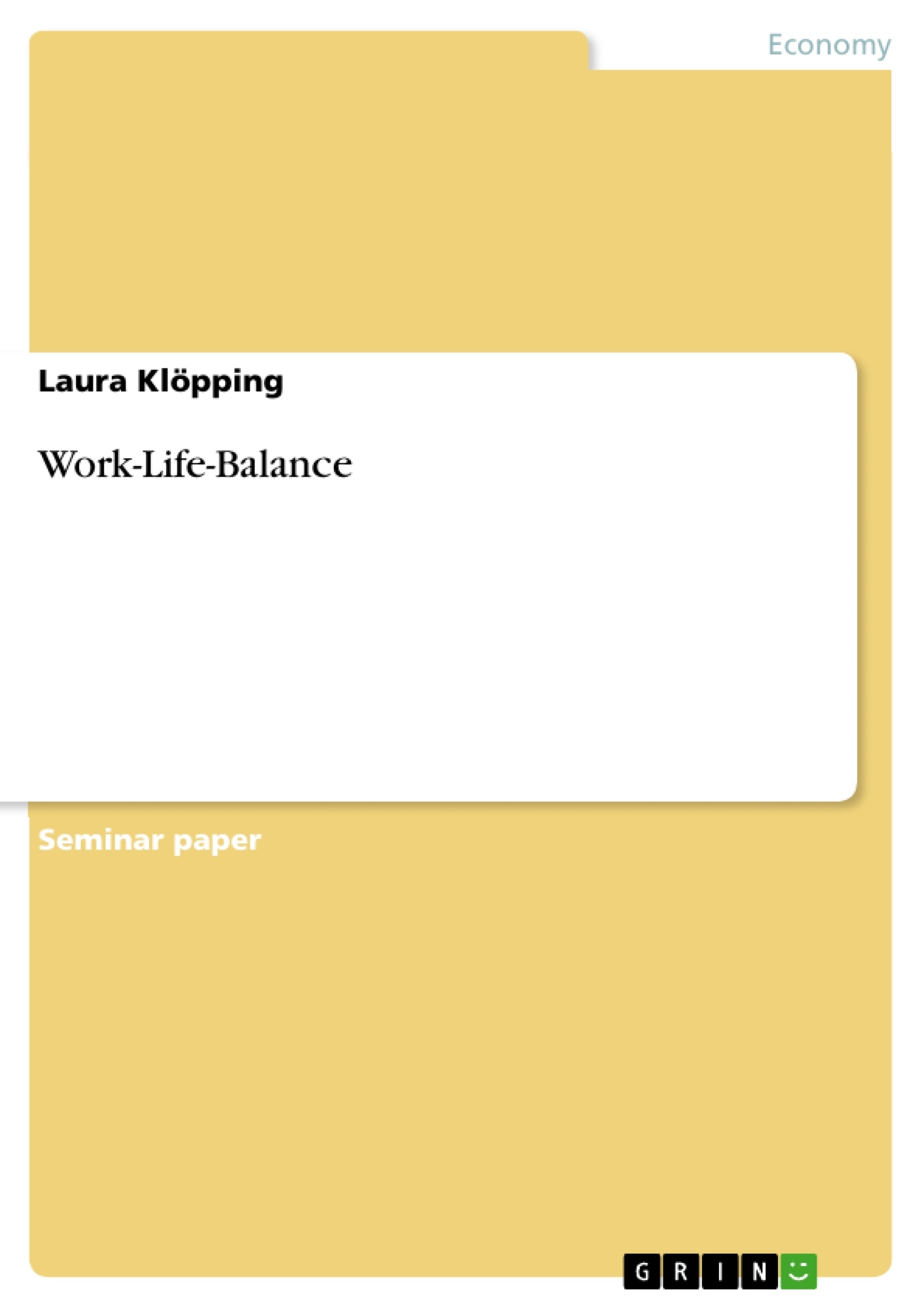Due to historical, economical and social changes the roles of work and workplace have changed. This assignment deals with the Work-Life-Balance of working women and men. The importance of this topic raised in the last few years and the need for flexible working models and for example the support of child care is getting more and more important. But how can Work-Life-Balance be defined and what is the importance of it?
There is no agreed definition of Work-life Balance. “Work-life Balance is about people having a measure of control over when, where and how they work. It is achieved when an individual's right to a fulfilled life inside and outside paid work is accepted and respected as the norm, to the mutual benefit of the individual, business and society”. Only if the relation between life and work, the triangle of time, money and health is balanced, humans can meet the demands of the age of communication with energy and love of life. Also it does not mean an equal balance in units of time. Related terms include "lifestyle balance" and "life balance". There is no perfect, one-size fits all balance one should be striving for. The best Work-Life-Balance is different for everyone because of different priorities and different lives. For some people it means to balance their caring responsibilities for children with work, while others want more time for themselves and for their leisure activities. Trying to schedule an equal number of hours for each work and personal activities is usually unrewarding and unrealistic because “life is and should be more fluid than that”
Summarized can be said that Work-Life-Balance can be defined as a satisfactory level of involvement or „fit‟ between the multiple roles in a person‟s life.
Table of Content
1. Introduction
2. Historical Changes
2.1. Economical and Social Change
2.2. Social Change Considering the Role of Women
3. Reasons for an Unbalanced Life
3.1. External Reasons
3.1.1. Demanding Job
3.1.2. Pressure from Family, Society and Media
3.1.3. Time Management and Establishing Priorities
3.2. Internal Reasons
3.2.1. Success Means Career
3.2.2. Inner Safety Means Financial Safety
3.2.3. Mistaken Beliefs
4. Affects of Imbalance
5. Possible Arrangements to Implement Work-Life-Balance
5.1. Balance in Work and Carrier
5.1.1. Flex time
5.1.2. Part - time
5.1.3. Job sharing
5.1.4. Working at home
5.1.5. Sabbatical
5.2. Balance in Private Life
5.2.1. Child Care
5.2.2. Health Care
6. How it Actually Works in Companies
7. Conclusion / Summary
- Quote paper
- Laura Klöpping (Author), 2011, Work-Life-Balance, Munich, GRIN Verlag, https://www.grin.com/document/189359
-

-

-

-
Upload your own papers! Earn money and win an iPhone X. -

-
Upload your own papers! Earn money and win an iPhone X. -

-
Upload your own papers! Earn money and win an iPhone X. -

-
Upload your own papers! Earn money and win an iPhone X. -

-
Upload your own papers! Earn money and win an iPhone X. -

-
Upload your own papers! Earn money and win an iPhone X.

